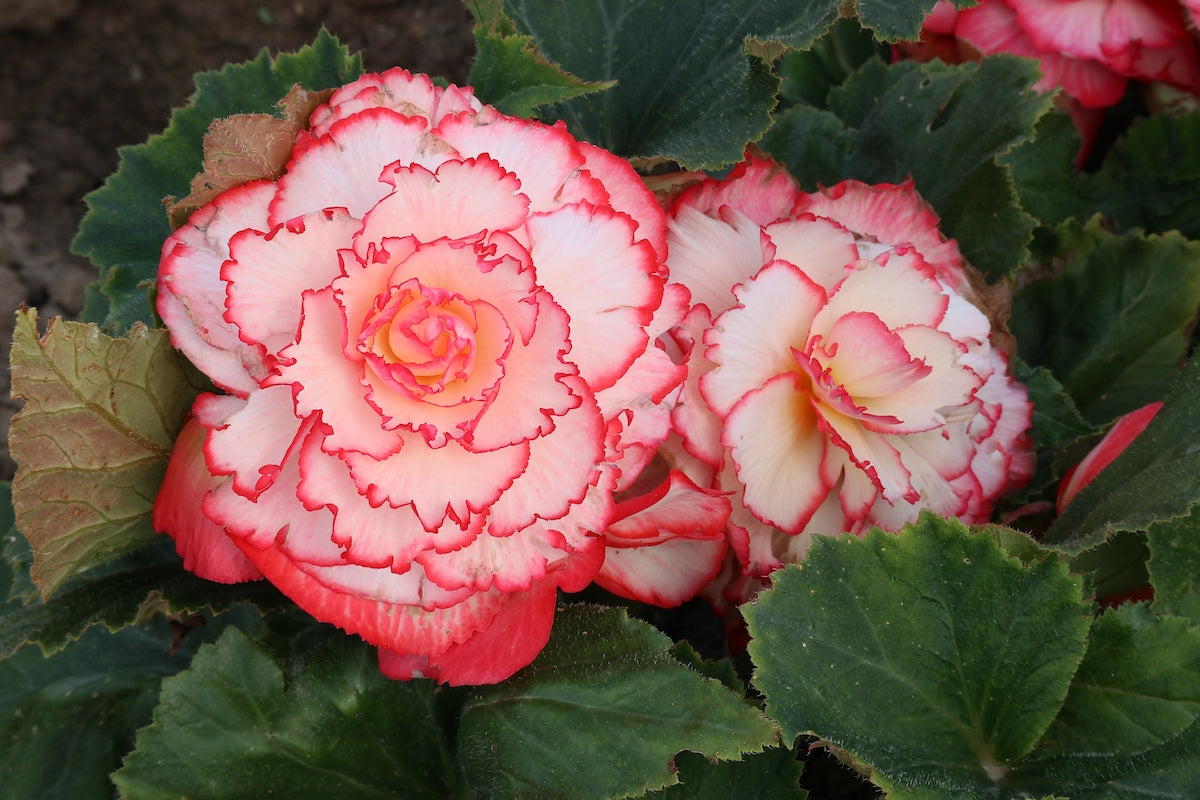
About Begonias
Begonias are a genus of flowering houseplants that are most commonly used in flower beds, pots and hanging baskets. They come in several shapes, colors and sizes that brighten up shaded areas and indoor displays. They have a long flowering life, typically throughout the summer until the first frost.
Tuberous begonias grow from firm, rounded tubers, and can grow either upright or cascading. Depending on their growing habit, they are excellent decorative plants for use in pots, window boxes and flower beds, as well as larger planters and hanging baskets. Most tuberous begonias bloom large, stunning flowers, in shapes much like a rose. They come in a variety of bright and luminous colors that will please any flower lover.
The Basics
Most Begonia varieties are suitable for zones 9 to 11, and are usually grown as annuals and houseplants. Height varies depending on the variety. Tuberous begonias can reach heights of 12 to 18 inches indoors, or up to 3 feet outdoors. They grow well in sun to partial shade, or even full shade depending on the variety. Blooming starts in the early summer and lasts until the first frost.
Tuberous begonias come in upright or trailing varieties, with usually large leaves that are a glossy green or burgundy. Their blooms are commonly large and single, double, or ruffled flowers. Their color range is mostly shades of white, yellow, orange, red and pink.
When Do I Plant Begonia Flowers?
Begonias are Spring planting. Plant them only after all danger of frost has passed, and temperatures are stable above 50 degrees as they are very sensitive to frost and cold, wet conditions.
Planting Begonias
Begonias are of tropic origins, so they enjoy plenty of light but need protection from extreme heat. Your best bet is to choose a spot that gets plenty of sunlight in the morning and nice shade in the afternoon.
In colder zones, Begonias can be started indoors, particularly if you plan to plant them in the garden, as you can get them started until it’s warm enough to plant them in the ground. To do this, place the tubers in a shallow tray with potting mix, hollow side up and 1 inch apart. Keep the tray in a dark room, providing just enough water to keep the potting mix wet but not drenched or soggy. Within 4 weeks, the tubers should start to sprout, and can be moved to a brighter room with light when the sprouts grow an inch. Maintain them indoors until the frost has passed.
When it’s time to plant the tubers, plant them 1 inch deep, and 10 to 12 inches apart if in the ground. In indoor pots and window baskets, they can be planted a little closer together. Use light, fertile and well draining soil to ensure the begonias grow to their best abilities.
Aftercare for Begonias
- Water moderately every few days, enough to keep the soil moist but not soggy. Be careful not to overwater, as the tubers are susceptible to rot in wet conditions and in potted plants, the stems can rot.
- Use a balanced fertilizer to keep your begonias nourished.
- In the ground, you can use mulch moderately around the plants to preserve moisture, being careful not to overcrowd the stems. Potted begonias do not need mulch.
- Deadhead throughout the season to keep begonias looking their best. Cut off spent or rotting flowers about an inch below the flower, to prevent infections and keep the plant healthy.
- Decrease water towards the end of the season.
- Let the flowers die back naturally, and trim the foliage when it turns yellow.
Dig up the tubers before the first frost. Shake off the soil and clean the remaining dirt, drying the tubers in a sunny spot for a week. Store them one by one in paper bags, or wrapped in newspaper.
